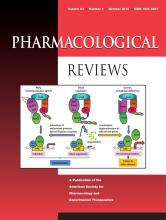Abstract
Nicotinic acetylcholine receptors (nAChRs) are ligand-gated, cation-selective ion channels expressed throughout the brain. Although these channels have been investigated for several decades, it is still challenging 1) to identify the important nAChR subunits in cholinergic transmission and nicotine dependence and 2) to develop nAChR subtype-specific ligands. To overcome these challenges, we and others have studied mice expressing mutant, gain-of-function nAChR subunits. In this review, we discuss this research approach and the results it has yielded to date. Gain-of-function mutations, including those in nAChR subunits, provide an approach that is complementary to loss-of-function studies such as gene knockouts; the former allows one to answer questions of sufficiency and the latter addresses questions of necessity. Mutant mice expressing gain-of-function nAChR subunits are commonly produced using traditional gene targeting in embryonic stem cells, but novel approaches such as bacterial artificial chromosome transgenesis have yielded important insights as well. α7 nAChRs were the first nAChRs to be targeted with a gain-of-function mutation, followed by a pair of α4 nAChR gain-of-function mutant mice. These α4 nAChR gain-of-function mice (α4 L9′S mice, followed by α4 L9′A mice) provided an important system to probe α4 nAChR function in vivo, particularly in the dopamine reward system. α6 nAChR gain-of-function mice provided the first robust system allowing specific manipulation of this receptor subtype. Other targeted mutations in various nAChR subunits have also been produced and have yielded important insights into nicotinic cholinergic biology. As nAChR research advances and more details associated with nAChR expression and function emerge, we expect that existing and new mouse lines expressing gain-of-function nAChR subunits will continue to provide new insights.
Footnotes
This article is available online at http://pharmrev.aspetjournals.org.
- © 2012 by The American Society for Pharmacology and Experimental Therapeutics
PharmRev articles become freely available 12 months after publication, and remain freely available for 5 years.Non-open access articles that fall outside this five year window are available only to institutional subscribers and current ASPET members, or through the article purchase feature at the bottom of the page.
|






